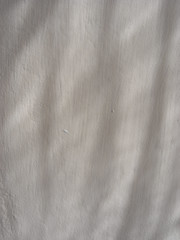
Saturday 23 April 2011
Thursday 7 April 2011
it's all in a cup of tea
Baroque ... under its rubric are placed a proliferation of mystical experience, the birth of the novel, intense taste for life that grows and pullulates, and a fragility of infinitely varied patterns of movement. It could be located in the protracted fascination we experience in watching waves heave, tumble, and atomise when they crack along an unfolding line being traced along the expanse of a shoreline; in following the curls and wisps of colour that move on the surface and in the infinite depths of a tile of marble; or, as, Proust described, when we follow the ramifying and dilating branches of leaves piled in the concavity of the amber depths of a cup of tea.
from
Translator’s forward
A plea for Leibniz xi
The Fold
Leibniz and the Baroque
Gilles Deleuze
Foreword & translation Tom Conely
Friday 1 April 2011
neither object or subject
In the spectrum of losses that structure life from birth to death the presence of cloth is a central signifier that differentiates nature from culture, and thereby remains forever liminal in its cultural significance. This liminality is held, like a smell in the meaning of the word “stuff,” a translation of the French word étoffe, cloth. It has become a term for generic “thingness,” unspecified materiality, in way that eloquently represents our ambiguous relationship to textiles that we experience as neither object nor subject, but as the threshold between. It is this quality of non-sense that makes textiles especially interesting.
from: Stuff & Nonsense by Claire Pajaczkowska
from: Stuff & Nonsense by Claire Pajaczkowska
Volume 3, Issue 3, pp. 220–249
pli
ployer (later pleier) "to bend, to fold," from L. plicare "to fold, lay"

the image is its own link to a larger version

the image is its own link to a larger version
Subscribe to:
Posts (Atom)